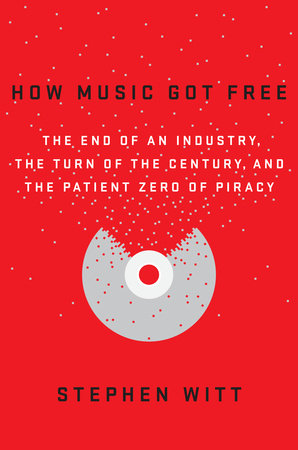The Music Industry Studies Program at Loyola University New Orleans (where I teach) has a weekly forum with all of our students. A couple of months ago our guest speaker was ill, so I put together a discussion on ideas around genre. There is video evidence. The talk starts about 10:30 in, after the student announcements.
Category: Music
AAJ Review of Dave Cappello & Jeff Albert with William Parker: New Normal
Dave Cappello & Jeff Albert with William Parker: New Normal:
“If sentimentality is the synonym of nostalgia, then the antonym is anticipation, and maybe a better word would be modernity. That word comes to mind spinning the trio recording New Normal by trombonist Jeff Albert, drummer Dave Cappello and their guest, bassist William Parker. “
How Music Got Free: the end of an industry, the turn of the century, and the patient zero of piracy
I recently finished reading How Music Got Free: the end of an industry, the turn of the century, and the patient zero of piracy by Stephen Witt (Penguin Random House).
It is a compelling account of the end of the era of major label largess told through the concurrent tales of a label executive, technology innovator, and early pirate. It doesn’t offer answers to the industry’s current problems, but it does help explain how we ended up where we are. Witt is a skilled story teller and it is an enjoyable read. I highly recommend it to anyone interested in the inner workings of the music industry, and related technology.
Tour recap and shout outs
I just got back from a lovely two weeks in Europe. The main purpose pf the trip was for a tour in Italy with Marcello Benetti’s Shuffled Quartet, but I worked in a trip to Switzerland for the International Society for Improvised Music 2015 Conference.
Our regular woodwind collaborator, Rex Gregory, could not make the trip because he is busy being a new father, so we had Dan Kinzleman on clarinet, flute, and tenor sax. Dan is an American musician who has lived in Italy for the last ten years or so. He is a wonderful musician, a fun hang, and a great road comrade. We were happy to have him with us. It was also nice to have two people who spoke the language of Italian sound engineers at sound checks.

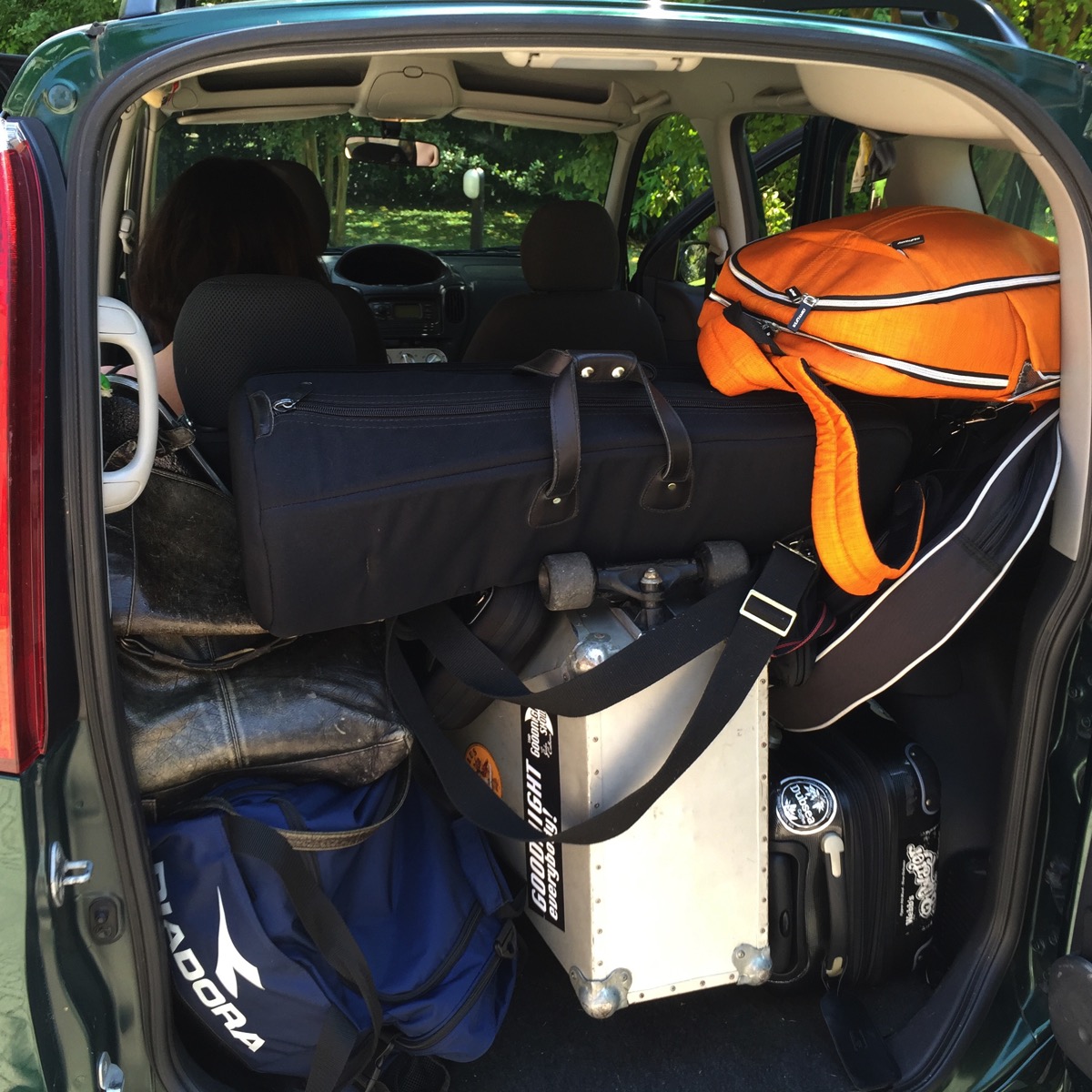
We did most of the touring in Marcello’s Toyota Yaris Versa. Somehow we all fit, with the stuff.
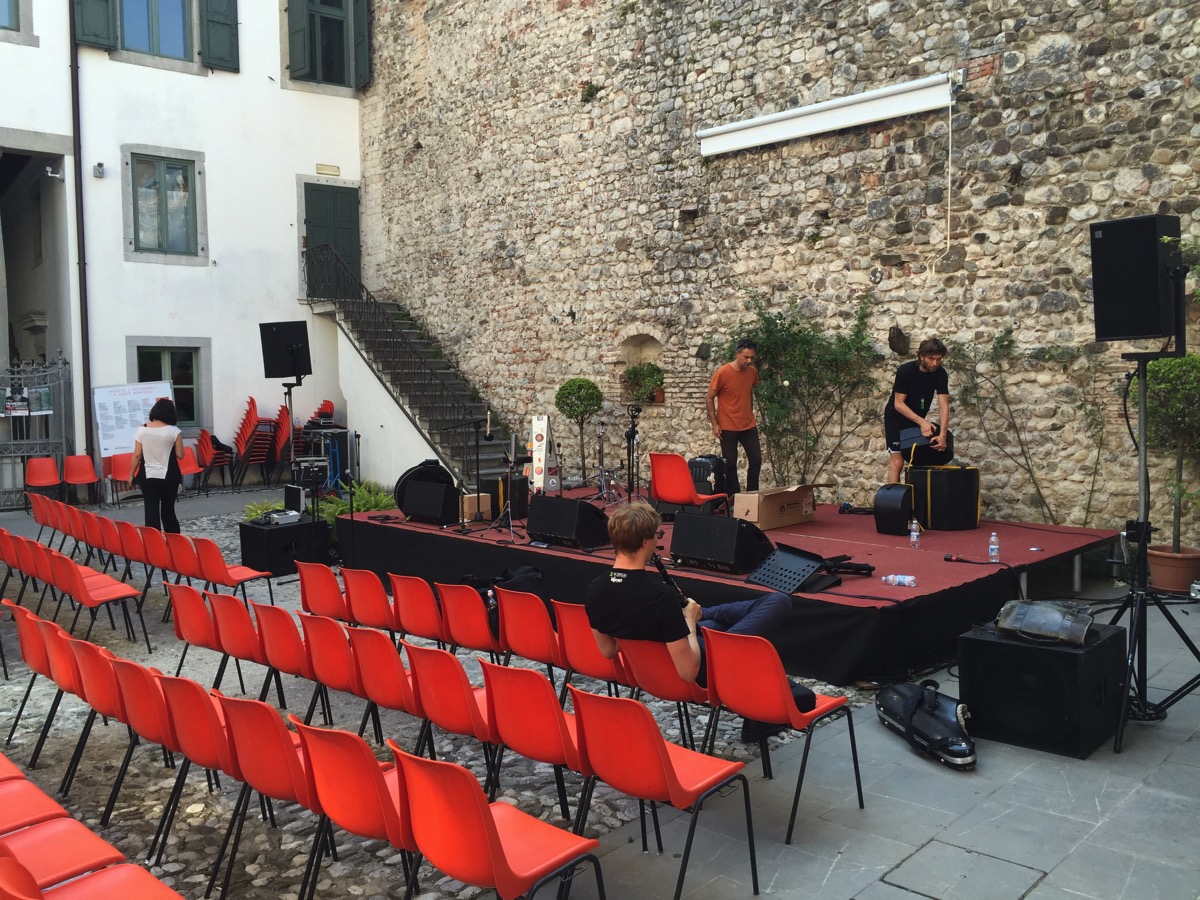
Setting up for soundcheck in Udine, for our performance at Udin&Jazz. The concert space was lovely and the sound was very good. The festival also had great hospitality.

Sound check selfie.
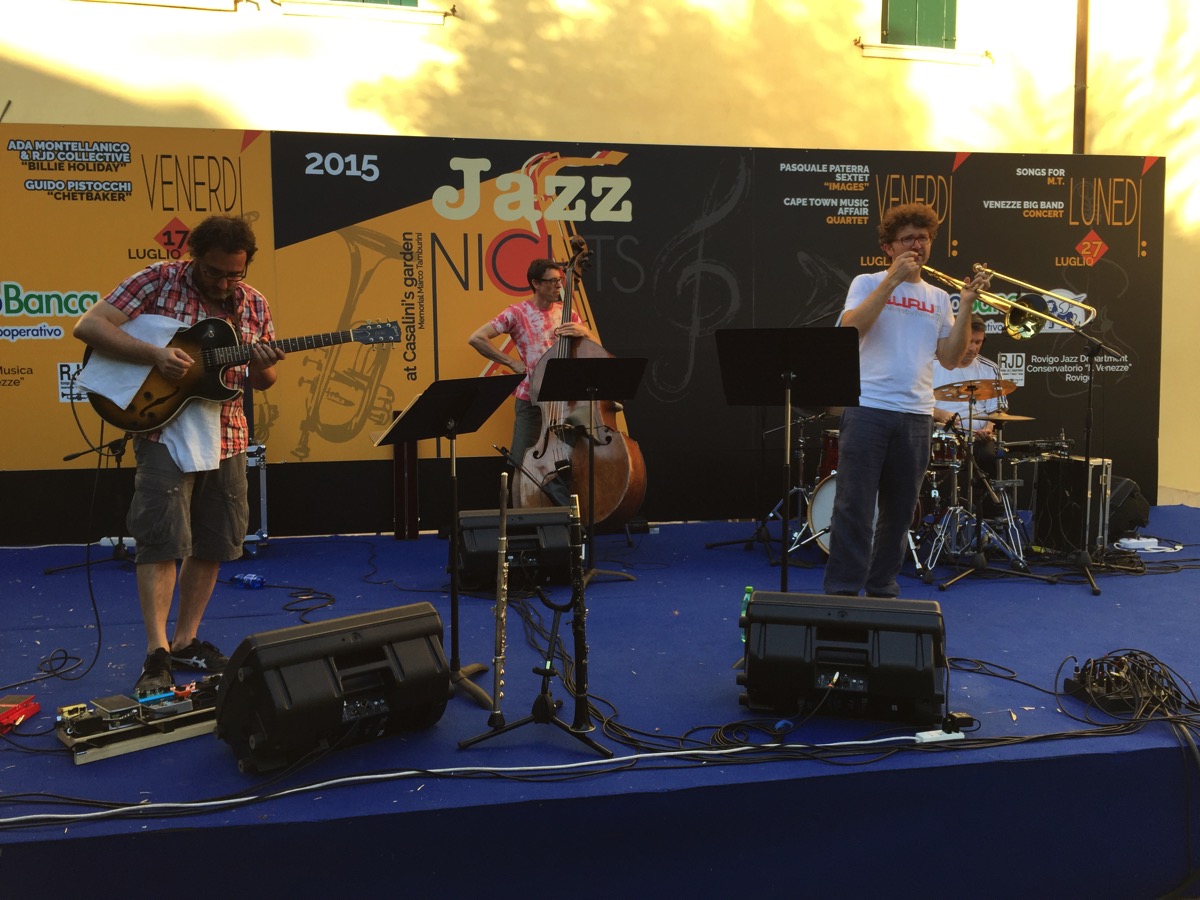
The last gig of the tour was in Rovigo for the summer jazz series presented by the conservatory there. We shared the concert with the quartet of Massimo Morganti, who teaches at the conservatory. This pic is Massimo’s band at sound check.
After the gig in Rovigo, Marcello and I drove overnight to Chateau-D’Oex, Switzerland for the ISIM Conference. The over night drive was crazy, but when you arrive to this view from your hotel room, it feels less stupid.
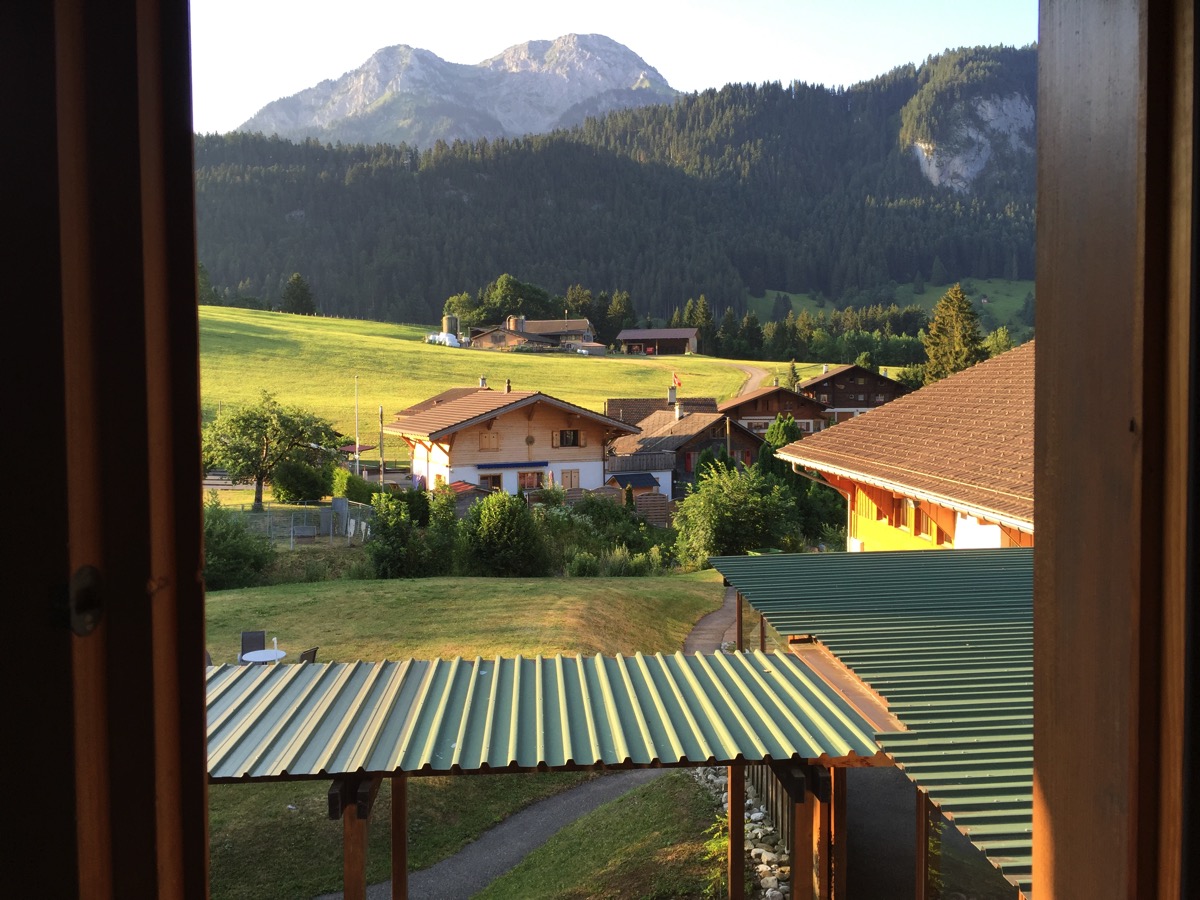
This tiny alpine village seemed like an odd choice for the location of this year’s conference, but the setting was lovely, and the hosts were great. There were some good conversations about diversity, and community building. I presented on improvisational structures I use with my student laptop orchestra, and I really enjoyed Jeff Morris’s presentation on his weblogmusic.org project.
I also got the chance to hear a great house concert before I came back home. The band was led by Filippo Vignato, and they did his arrangements of Albert Manglesdorf’s music. The band included Piero Bittolo Bon, who has performed at Open Ears, and a great young bass player named Rosa Brunello.
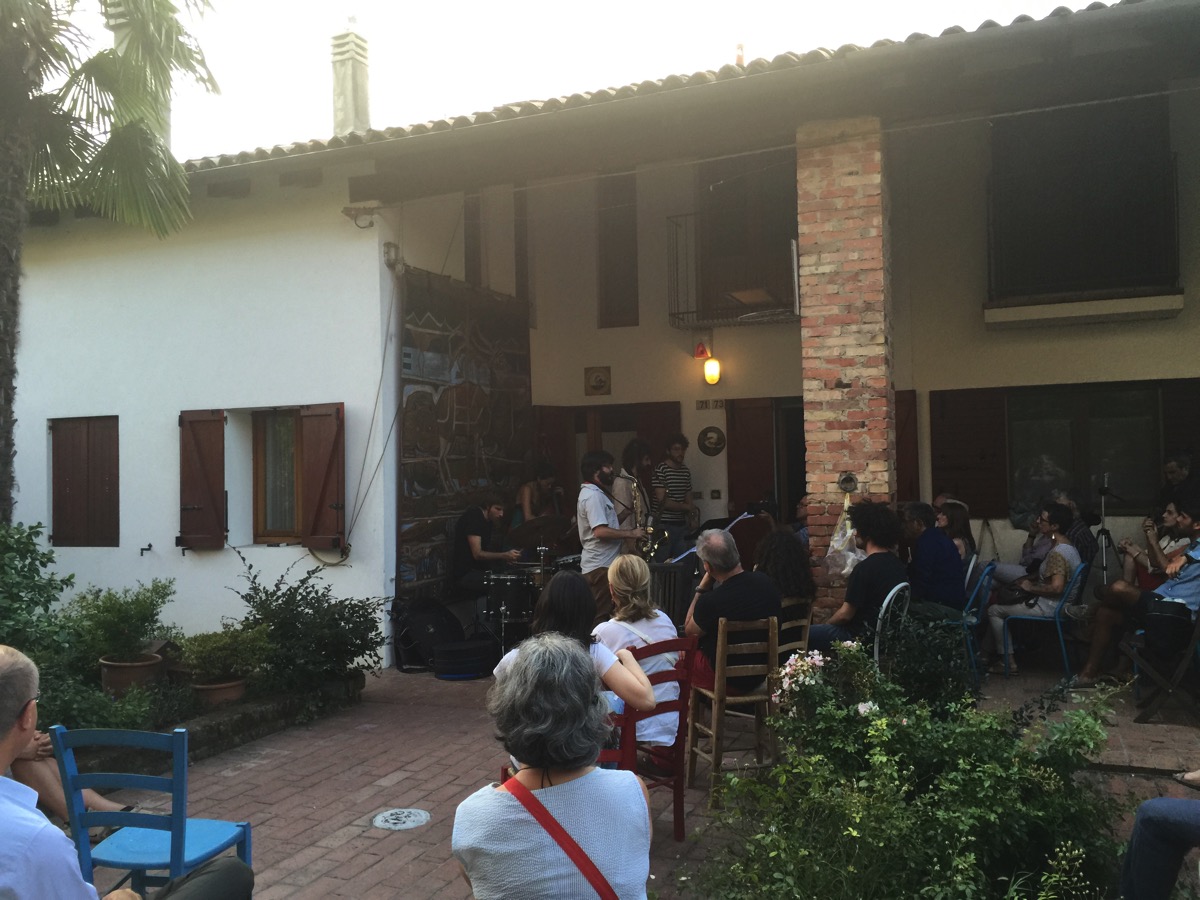
It was a great trip. We made some good music, and I met or reconnected with a bunch of great people. I am happy to be home, but a touch sad that I left before I could experience Mirano Baseball Day.
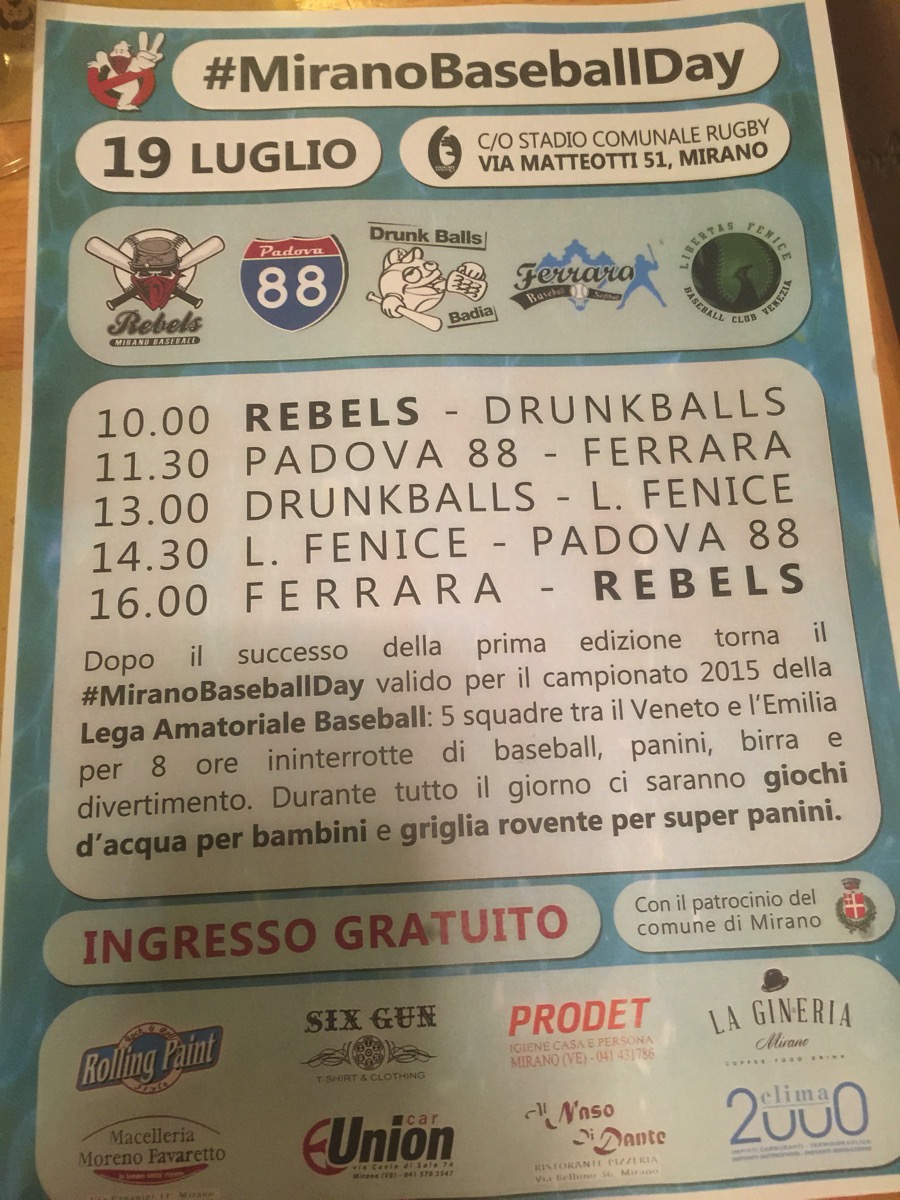
Breakfast for Dinner Records
I have a new record label called Breakfast for Dinner Records. The music is available in most of the usual digital places and CDs are available from the label’s band camp page.
You can also buy the downloads on Amazon ( Staffa, Duets 2014 ), or iTunes ( Staffa, Duets 2014 ), or listen on Spotify ( Staffa, Duets 2014 ).
Cover baggage
This recent post on DTM (a great blog by Ethan Iverson of The Bad Plus) got me thinking again about the baggage that comes with covering well known material. I think it is almost impossible to judge a radical reworking of a very well known song solely on the merits of the new arrangement. There is simply too much baggage for the listener, unless the listener is unfamiliar with the original. In that latter case, the lack of inherent meaning also diminishes the appreciation of the new arrangement.
Ethan’s post mentioned that one of the detrimental comments sometimes laid on Jason Moran’s ALL RISE: A Joyful Elegy For Fats Waller was that it was too close to smooth jazz at times. I wonder if some of that is about the material. Does the presence of such well known songs as “Ain’t Misbehavin'” or “Honeysuckle Rose” cause us to hear those tracks as more in the smooth jazz/muzak vein than we would if they were originals with similar grooves, arrangements and instrumentations?
Another accusation is that this music is a sellout or commercial grab. I don’t buy that. Jason Moran has enough artist cred that I trust this as a legitimate expression on his part…although the big Fats Waller head does freak me out a little.
A Shocking Exchange on Facebook about Music and Hard Work | The Art of Freedom
How we frame what we do matters.
A Shocking Exchange on Facebook about Music and Hard Work | The Art of Freedom:
“Where is the love of the everyday music-making that we give to ourselves? Yes, music-making can be rewarding, but not just when the performance goes well and as planned! Where is the joy of learning, of experimentation? The spark of curiosity? The excitement of discovery? Where is the delight in making sound for the sake of making sound? Why take the fun out of what we do 90% of the time, which is in the practice room, not onstage? Why make such a harsh division between play and the studied attention we pay to detail in the practice room or in a lesson?”
Ken Vandermark visits Loyola September 8 & 9

We’re (part of) #41!
For Downbeat Magazine’s 80th Anniversary (July 2014), they published a list of the 80 coolest things in jazz. #41 is New Orleans, and the Open Ears Music Series got a brief mention in the article:
At…events like Jeff Albert’s Open Ears Music Series, improvising players innovate new sonic concepts on the fly, giving listeners direct and immediate access to their creative process.
WWOZ got their own (well deserved) solo shout out, as did friends Jason Adasiewicz and Mike Reed. These sorts of lists always make for good arguments, but this one is pretty well rounded.

Dark Forces Swing Blind Punches: I want to stay: Celebrating Ornette in Prospect Park
A great recap of the Celebrating Ornette concert for those of us who missed it.
Dark Forces Swing Blind Punches: I want to stay: Celebrating Ornette in Prospect Park: “Of course you would want to listen to this music. It’s for everybody. It’s not that its once-controversial radical-ness has been tempered; it’s more that the music has been given ample time to disseminate to its true audience, the public, flowing past the gatekeepers/naysayers and eventually submerging and silencing them.”

